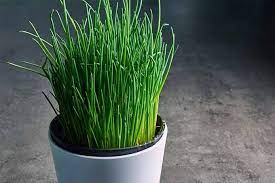Last Updated on April 5, 2024 by Real Men Sow
Chives are cool-season perennials that can be planted early to mid-spring and harvested early in the summer. This herb can take over your garden if it is allowed to fully develop (the seeds will be scattered by the flowers). If it invades other areas of your garden, you can easily dig it up and move it. Chives in winter are good for cooking and seasoning, but they should not be eaten raw because they contain thiophene, which has been linked with liver cirrhosis and cancer.
Chives can also be used as companion plant to deter pests. You can plant them with tomatoes, carrots, celery and lettuce.
Medicinal Properties
It may surprise you to learn that chives can relieve stomach discomfort, prevent heart disease and stroke, and help fight bacteria that can cause illness.
How to Grow Chives in Winter
Take a few clumps and pot them. Cover them with a cover. Ideal conditions are a cold greenhouse or a porch with good lighting. Even though all chives will eventually fall to the ground in winter, those that are left out at the mercy of the colder weather will live a little longer.
After the plants have died, you can remove any dead material and water them occasionally throughout winter.
Harvest
Cut the stems to the base when harvesting your chives. New shoots will continue to grow throughout the growing season. Your chives will start to shoot again in early spring for an early crop or you can return them to the garden.
Chives are grown to produce their leaves. They are used as flavouring herbs and have a milder flavour than other Allium species. The vitamins A and C in chives are high, as well as trace amounts of sulphur.

